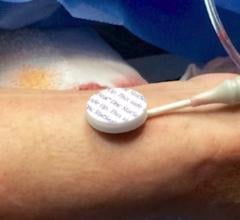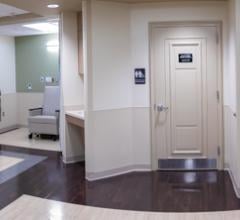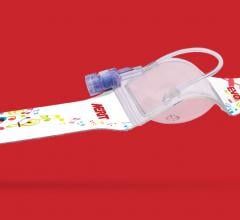TeleTracking solutions TransportTracking is an automated, dispatcherless transport management solution. UIC also uses TeleTrackings BedTracking and Bed Management electronic bedboard components, which ease and streamline bed management.
In the current economy where hospitals are tightening their belts to help get through tough times, technology can aid in cost cutting by increasing physician and staff efficiency. From trends seen at trade shows over the past year and recommendations from cardiologists come five ideas to help increase speed: bar-code and RFID inventory control systems; automated structured reporting in cardiovascular information systems; vascular closure devices; automated contrast injectors; use of radial access; and better support services communications.
Automated reporting software
Structured reporting in cardiovascular information systems (CVIS) and cardiovascular image and information systems (CIIMS) can save time in completing reports, documenting cases and sharing information and images with referring physicians. The biggest savings comes from structured reports, which can help automatically draft a final report in the background as information is entered. The structured fields also allow easy information mining, which can save a lot of time in researching statistics and collecting data for registries and quality reporting.
ProSolv (owned by FUIJIFILM USA) was one of the first to introduce a CIIMS with structured reporting. GE, Siemens, Philips and others also offer systems with similar capabilities.
“It never made sense why all the notes a cath lab tech takes can’t be loaded into a system that can help generate a report by the end of a case,” said Jeffrey Breall, M.D., director, cardiac catheterization laboratories and interventional cardiology, Krannert Institute of Cardiology, Indiana University, Clarian Health. “No one had been able to step up to the plate until ProSolv came along.”
He said ProSolv built its system with vendor-neutral interfaces for easy integration with other manufacturers’ cath lab imaging or hemodynamic monitoring systems. These systems feed information to ProSolv to help populate structured reports.
“About 97 percent of the report is completed by the end of the case,” Dr. Breall said. “It saves me a lot of time.” He said finishing the report takes less than five minutes and eliminates dictation systems and transcription costs.
Structured reports require different doctors to all use the same terms and descriptions, which allows data to be mined for information using computer search functions. It is not possible to accurately mine data entered using dictation or free-hand text entry.
Most structured reporting systems include a coronary tree that can be manipulated to show occlusions, stents, bypass grafts, and a patient’s specific anatomy. When an occlusion icon is placed on a vessel, a pop-up window asks for information about length and degree of stenosis. Stents placed on vessels have pop-ups asking for the type of stent and sizing information. The information also helps create the automatically generated report.
“It is nice for the physicians to have a uniform report, and administrators love this system because instead of having five or six full-time employees pull data to send to insurance and databases to show levels of patient care, we can just have ProSolv pull the information out,” Dr. Breall said. This efficiency allowed his facility to eliminate several full-time positions.
Changing to a structured reporting system will not win friends in a department where cardiologists are comfortable with dictation and typing their own reports. “You have to have a ‘bad guy’ at the top to say this is what is going to happen,” Dr. Breall said. “I was that bad guy in our department. But, after a few days of using the system the doctors said ‘this isn’t so bad.’”
Speeding procedures, cutting complications
Minutes count when a patient with an ST-elevated myocardial infarction (STEMI) arrives for emergency PCI. STEMIs, aside, cath lab staff and physicians can also benefit from any ability to save time and increase patient throughput, especially in high-volume labs.
Radial access could help speed PCIs once interventionalists become experienced and comfortable with the technique, said John Kao, M.D., an interventional cardiologist at the University of Illinois at Chicago Medical Center (UIC) and the Jessie Brown VA Hospital in Chicago. He said this has a big advantage in STEMI cases, but UIC also uses radial access on many of its regular cases to save time for both staff and patients. “Patients can sit up and walk around after a procedure, things that you can’t do with femoral access,” he said. Patients can walk to go to the bathroom unassisted and usually have less pain, and the earlier ambulation helps significantly reduce nursing time, Dr. Kao said.
Terumo offers tools to speed radial access procedure times. Dr. Kao said the company’s 5 Fr. hydrophilic Glide Shealth radial introducer easily slides into the radial artery to speed access. Terumo also offers the Optitorque Jacky-tip catheter for radial access procedures, which Dr. Kao said enables easy right and left main access without the need for time-consuming catheter exchanges.
Overall, Dr. Kao also said radial access has fewer bleeding complications than femoral access. For access site closure, he said an inexpensive, $30 HemoBand can be used for access site compression, as opposed to a $300 access closure device.
Access closure devices
In most cath labs where femoral access is still the primary technique, access closure devices can help improve efficiency. Despite not being reimbursable, Dr. Kao said UIC uses closure devices because it saves nursing time. Compression requires a patient to lie on their back four to six hours and a nurse to maintain compression for 30-40 minutes. However, closure devices only take a minute to deploy while the patient is still in the cath lab.
“Access closure devices help increase throughput by getting patients out of the lab more quickly,” Dr. Kao said. “The nice thing about a closure device is you can close the patient on the table, even when they are fully anticoagulated.”
UIC uses three closure devices – the Abbott Perclose, St. Jude Medical’s AngioSeal and Access Closure’s Mynx. Dr. Kao said the Mynx is the newest of the devices and he likes it because it does not leave behind intravascular components.
While these devices help save time, Dr. Kao warns access closure devices do not necessarily mean better outcomes than manual compression. “It does not lower the complication rate. There is no decrease in comparable rates with compression, but the convenience is the key factor – that is what you are paying for,” Dr. Kao said.
Automating inventory control systems
Lab staff can save time during procedures and inventory counts through use of automated inventory control systems, such as bar-coding or passive radio-frequency identification (RFID) systems.
The Colorado Heart Institute LLC in Aurora, Colo., uses the Emageon’s HeartSuite Hemodynamics, a touch-screen system integrating data collection, waveform analysis, bar-code inventory control, patient charging and procedure reporting. Chief Administrator Adele Serio said the system has data mining capabilities, which look at inventory data and create detailed clinical and cost reports for the physicians who use the facility.
“It is very automated, very easy to use, and very user friendly,” Serio said.
She said the integrated bar-code system automatically allocates charges to patients’ bills and subtracts items from inventory counts.
“When you have to do so many things in the cath lab, this helps make things easier,” Serio said.
The system allows Colorado Heart to order items as needed on a daily basis to reduce on-site inventory. “What we use today, we want to reorder so it is here tomorrow,” Serio said.
Rush University Medical Center in Chicago uses Mobile Aspects’ RFID enabled cabinets to track its cath lab and cardiac OR inventories automatically. Ziyad Hijazi, M.D., director of the Rush Center for Congenital and Structural Heart Disease and professor of pediatrics and internal medicine, said the system is extremely helpful and helps keep better track of items that sometimes slip though the cracks. He said heart valves, stents, catheters and other high-ticket items each have their own RFID tags in the locking cabinets. The cabinets have computerized sensors that automatically keep track of the cabinet contents in real time.
“When you are busy in the middle of a procedure, sometimes the techs forget to enter the items used,” Dr. Hijazi said. “(The mobile Aspects system) accounts for everything used.”
“Utilizing these cabinets has been a tremendous time-saver for staff, replacing manual counts previously performed,” said Alexandra Martyniuk, RT, pediatric cardiology critical care technologist, RUSH Center for Congenital and Structural Heart Disease. “Over this past year we have been able to successfully reduce our par levels for various products resulting in less overstock and more cost savings. After more than 25 years in the cath lab this is by far the most accurate and user friendly system we have ever used.”
Martyniuk said various reports allow staff to keep track shelf life and expiring products. “Many vendors will exchange products if due notice is given, which is another way to keep budgets on track.
Better support staff response
“The problem I have seen that crushes efficiency here is that we are so dependent on other departments and services,” Dr. Kao said. “If house cleaning hasn’t cleaned the lab yet, I can’t bring the next patient in… If a room is not ready, I have to have a nurse watch that patient and they can’t be available for the cath lab.”
He said another stumbling block in flow is the delay in getting patients transported out of the cath lab and into hospital rooms. He said cath lab staff need to stay with the patient until they are handed off to another department.
However, UIC saw a big increase in efficiency when it converted to Teletracking’s personal digital assistant (PDA) based system so its support staff can track where they are needed in a prioritized system of real-time alerts. Dr. Kao said orders are entered into the system and it sends a message to the responsible support staff members’ PDA device.
“It helps, you can manage the flow a lot better,” Dr. Kao said.
UIC uses three TeleTracking solutions. TransportTracking is an automated, “dispatcher-less” transport management solution. UIC also uses TeleTracking’s BedTracking and Bed Management electronic bedboard components, which ease and streamline patient placement and bed management throughout the hospital. All of the TeleTracking systems are integrated, the company said.
The MDA TransQuest system also offers a real-time, wireless, PDA-based patient transport dispatch system.



 May 19, 2022
May 19, 2022 








